The Stepwell: Descent into sacred geometry
Stepwells, particularly Chand Baori in India, are labyrinthine—with repeating geometric stairs, precise symmetry, and a visual logic that invites us to get lost or descend deeply.
Chand Baori in Abhaneri, India
Some places do not simply invite us in—they draw us downward, inward, into a deeper state of attention.
Earlier this year, I visited an ancient stepwell in India. I was mesmerized, it stayed with me, and reminded me of a book I read several years before, Susanna Clarke’s Piranesi. Both evoke the feeling of being inside a sacred geometry, a space built for utility, but in their beauty, becomes a place of reverence, a structured mystery.
In Piranesi, the central character wanders through a vast House filled with marble statues, flooded halls, and tidal rhythms.
He names the vestibules, records the patterns of water and wind, and honors the space as a living presence. The House is not simply architecture—it is memory, ritual, silence, and devotion. This echoes the experience of descending into Chand Baori or any of India’s ancient stepwells.
The stairs repeat endlessly, leading down toward water, and shadow—orientation blurs. Silence deepens.
The geometry is precise, yet the feeling is dreamlike.
Stepwells, like the House in Piranesi, carry powerful archetypal symbolism. The descent into darkness toward water evokes a journey into the unconscious, a return to the source. In Jungian terms, water is the great symbol of the unconscious—the unknown, the generative, the reflective.
To go down into a stepwell is to walk the spiral path of psyche: away from the noise of the world, toward the soul’s deepest chamber.
Both the House in Piranesi and the stepwell are solitary spaces. Not lonely, but contemplative. In Piranesi, the man at the center of the story moves with reverence. He is accompanied by tides, birds, echoes, memory. The same is true of ancient stepwells, often built as public places yet now inhabited mostly by silence. They have become devotional spaces—temples to time and water. And in both cases, the space gives something back: not information, but transformation. Around the perimeter of Chand Baori are shrine niches with carvings of Shiva, Ganesha and Durga.
There’s also the matter of form. The sacred geometry of the stepwell mirrors the paradoxes in Escher’s art and the infinite architecture of Clarke’s House.
They defy linear understanding. The stairs seem to go everywhere and nowhere. The symmetry disorients. But rather than being lost, we find ourselves drawn into a deeper mode of seeing. These spaces do not offer answers. They offer presence and a different perspective. When I first arrived at this stepwell, I was skeptical. It was in the middle of a vast terrain, and after a long drive on a difficult road. But, upon entering it, I was slowly captivated. Looking down into it was dizzying, making me feel off-balance.
We live in a time that often prioritizes the surface. But the House, like the stepwell, calls us below the surface—to stillness and reflection. Perhaps that is why these images stay with us. They are not only places. They are metaphors. They are invitations to remember the depths from which life flows.
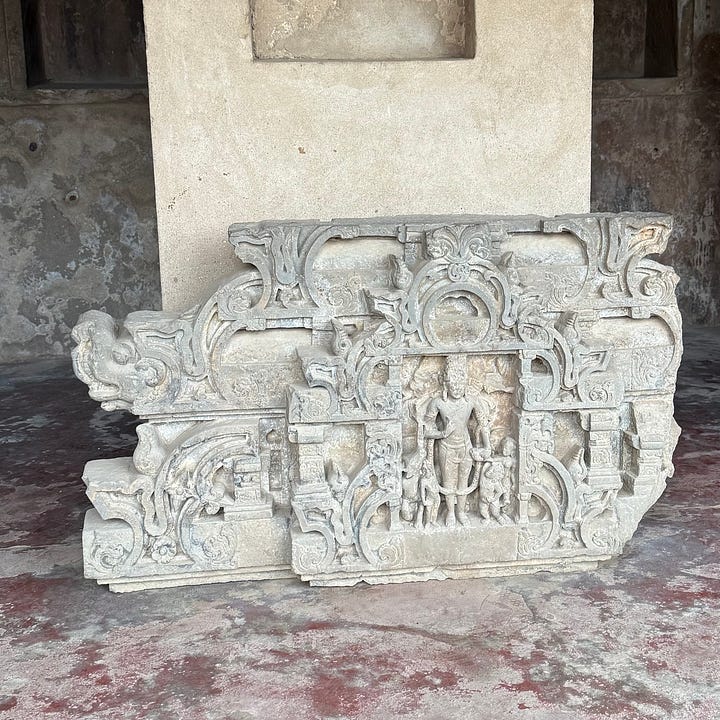
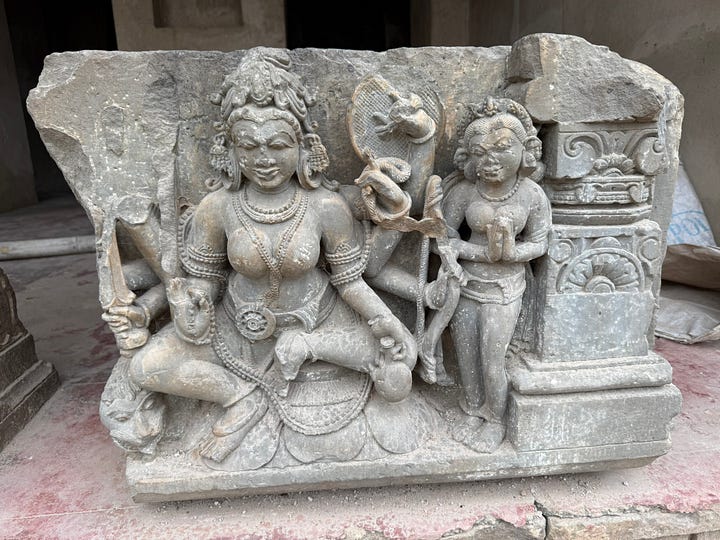
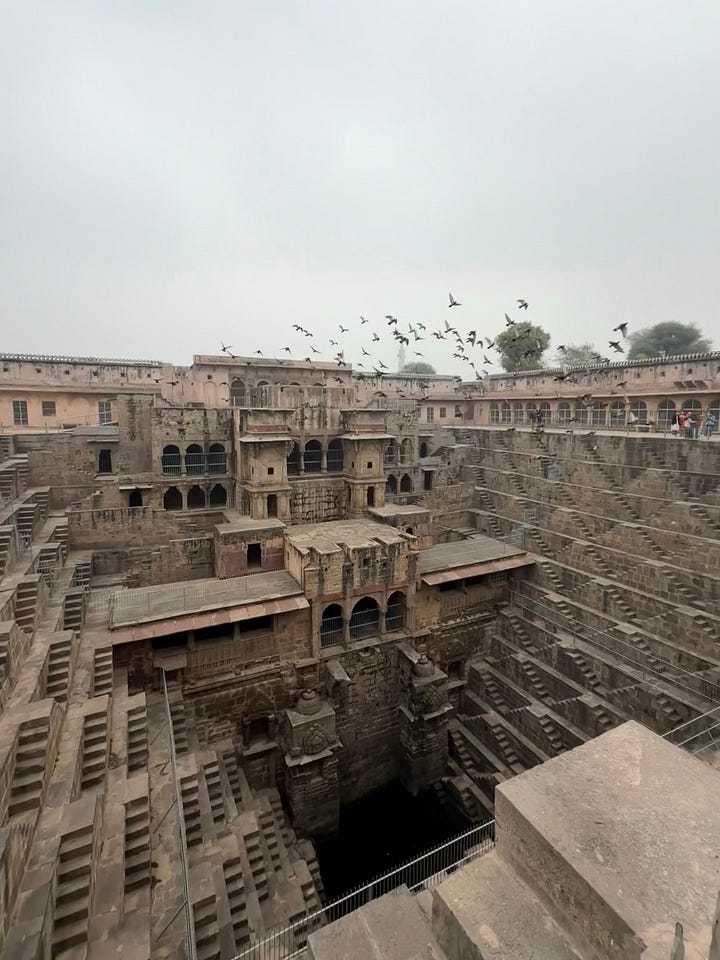
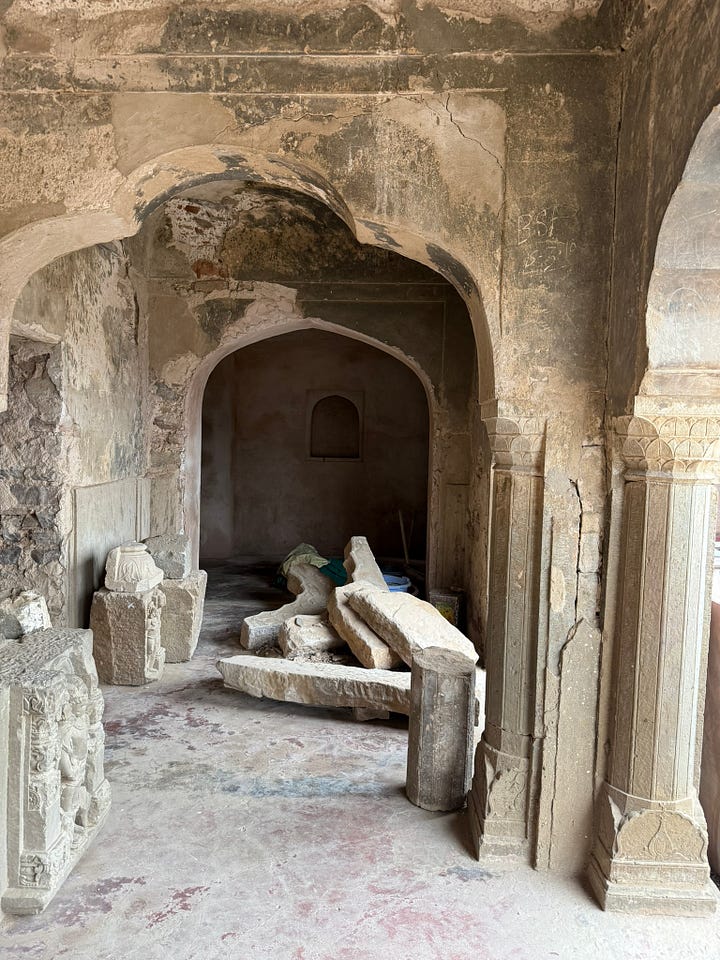
Notes:
Chand Baori stepwell, carved deep into Rajasthan’s earth and history, is a breathtaking blend of function, cultural resonance, and craftsmanship. It was a crucial water source in the drought-prone state of Rajasthan. It was commissioned in the 8th-9th century by King Chanda. One of the deepest and largest stepwells in India, 100 ft deep, with 3,500 narrow steps and 13 stories that make an inverted pyramid shape.
Susanna Clarke, Piranesi (Bloomsbury, 2020). The novel explores a dreamlike, timeless space called “The House,” filled with tides, statues, and mystery. Its atmosphere resonates with sacred architecture like ancient stepwells.
J.L. Locher, The World of M.C. Escher (Abrams, 2000).
M.C. Escher’s lithographs—especially Relativity (1953), Ascending and Descending (1960), and Waterfall (1961)—visually echo the recursive stairwells of India’s stepwells.




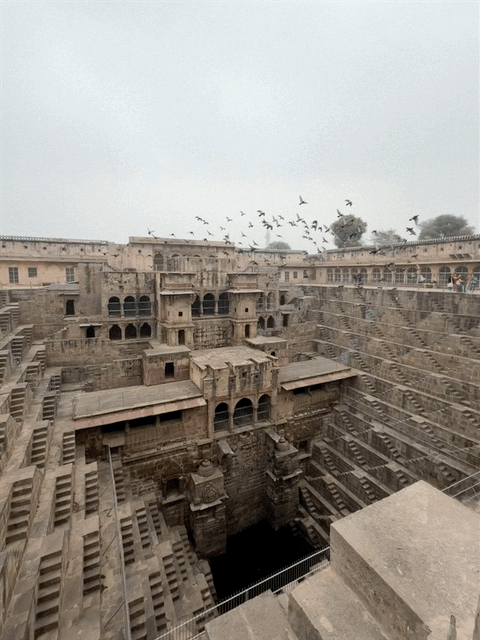

Mesmerizing. Beautifully described. A lovely, thought-provoking post. Thanks, Susan.